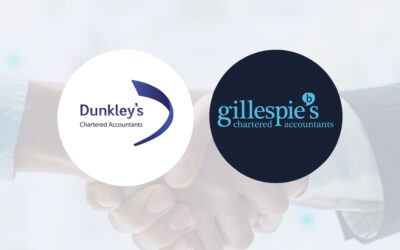what we think
We are more than happy to share our knowledge
blog
Most recent posts
Merger Announcement: Dunkley’s and Gillespie’s Chartered Accountants are joining forces
We are delighted to announce that the Gillespie’s Chartered Accountants’ team will be joining us, the Dunkley’s Chartered Accountants’ team as of Monday, 8th April 2024.
Mastering Business Expenses
In today’s economic landscape, where financial acumen plays a pivotal role in the sustainability and growth of any business, the importance of effectively managing business expenses cannot be overstated. This blog helps you to master your company’s business expenses…
How to Improve your Financial Health
Improving your financial health involves strategic planning, informed decision-making, and constant adjustments. There are many factors to consider – so how do you know where to begin? Here are some actions you can employ to boost your financial wellness in our latest blog…
Other resources
Essential tools and inside information
Welcome to Dunkley’s Knowledge Hub, a section dedicated to key tools, website links and other resources you can use to help build and optimise your business.

Business news
Latest tax, employment, business, and economic news affecting firms and individuals alike.

Calculators
A number of easy to use calculators, these will help you to check and plan your finances.

Publications
Each month, we have a new array of publications and documents on useful topics available for you.
What can we do for you?


